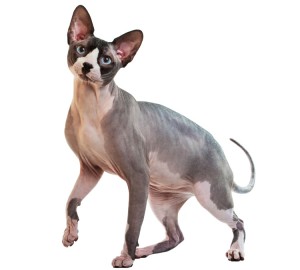Select a pet to learn more about specific breed.
Dog Cat
Choose a breed and learn more about your pet's health care needs.

This unusual cat appears hairless but does have a fine, downy layer over his chamois-leather like skin. Throughout history, genetic quirks threw up the occasional bald cat, but the first proper Sphynxs appeared in the 1960s. One breeder recognized the bald kittens from a domestic short hair mother as unusual and set about trying to establish the Sphynx breed.
However, a limited gene pool meant the breeding program quickly petered out. The breed was re-established in the 70s by breeding naturally occurring hairless cats with both normal coated cats and other hairless cats from around the world. With the addition of these new genetic lines, the breed is now much hardier.
Sphynx Health: Why do they Need a Pet Insurance Plan?
Ironically, because the Sphynx has no hair he needs more coat attention in terms of grooming, not less, than his fully-furred cousins. In a normal coat, the oils produced by the skin are spread along the hair shafts and then dispersed as the cat grooms. The Sphynx produces the same amount of natural oil, but this sits on top of the skin where it makes it easier for bacteria and yeast to colonize. This leads to an unpleasant greasy feel to the skin, and an increased risk of skin infections. Twice weekly bathing is advised to keep your Sphynx’s skin in good condition, and prompt visits to the vet are recommended if the skin becomes sore or inflamed.
Other Insurance Considerations:
• The Sphynx likes to eat, indeed without a fur coat to keep him warm he needs the calories as fuel. However, if you don’t keep a close eye on his weight, his good appetite can lead to obesity.
• The Sphynx’s lack of fur makes him more vulnerable to sunburn, and ultimately in the long term, to skin cancer.
• Some lines of Sphynx’s suffer from a hereditary condition that causes progressive muscle weakness. This affects their ability to swallow, and may necessitate the vet placing a feeding tube in order for the cat to take nutrition on board.
To compare plans from the best Pet Insurance providers, simply fill in our quick and easy to use quote form.
Select a pet to learn more about specific breed.
Dog Cat
Choose a breed and learn more about your pet's health care needs.